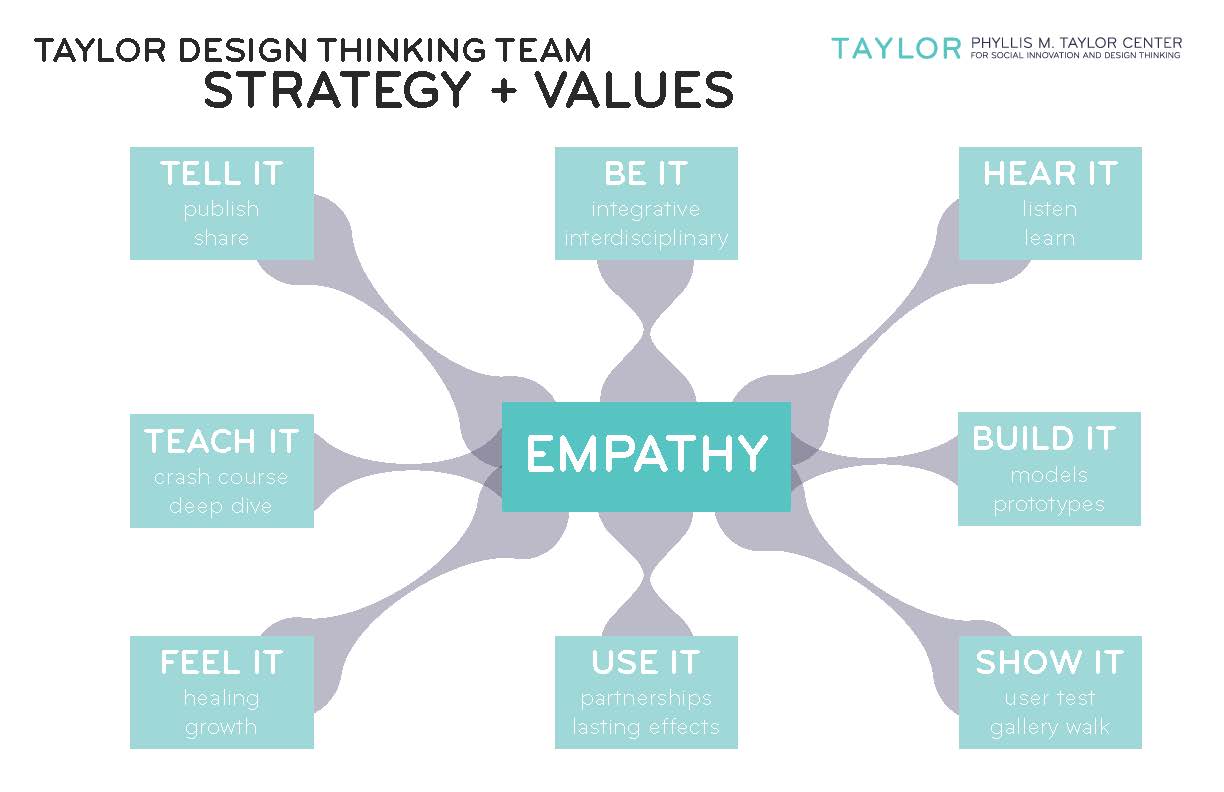Design thinking is everywhere these days. Well-known field giants like Stanford’s D. School and IDEO all have their own prescription for how to approach problems with a “designerly” mindset. The models focus on iteration and results. Although they can be done in any order, the steps taking places sequentially imply a specific structure.

Stanford D. School model for design thinking
Here at Taylor we do things a little differently. Our context at Tulane and in New Orleans as well as a focus on Human Centered Design continually led us back to empathy as a core value.
Designing with community partners reinforces that empathy is not just a singular step you do at the beginning and move on but mindset that is incorporated throughout.
Taking important lessons from existing models and methods, we developed a strategy that emphasizes empathy at the center, and a series of mindset methods instead of a sequence. These mindset methods can be done in any order and reinforce integration of empathy as a mindset into everything we do as “design thinkers.”
Empathy is the core of our entire process, every step links back to the central core and can be done in any order. Phrases like “hear it,” “build it” and “show it” refer more explicitly to the process of design.
“Tell it,” “teach it” and “feel it” are associated with more of the outcomes of the process. “Tell it” could take the form of formal research publications, or be informal as a discussion with a friend.
Tying it all together, “be it” and “use it” describe how empathy as a mindset is incorporated in everything you do. These mindsets and values exist in how we act and think in daily life.
Thanks to Allison Schiller for drafting this graphic

